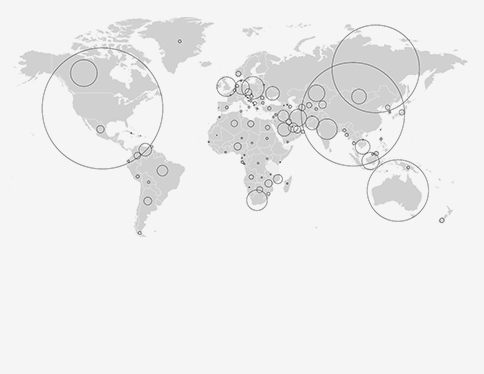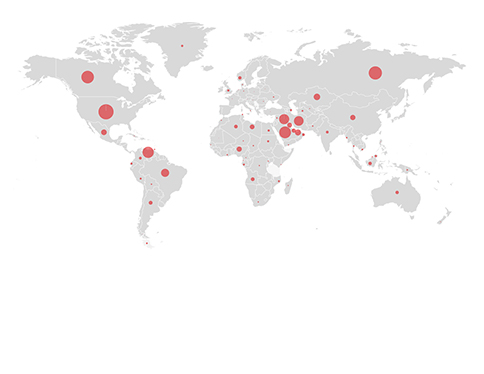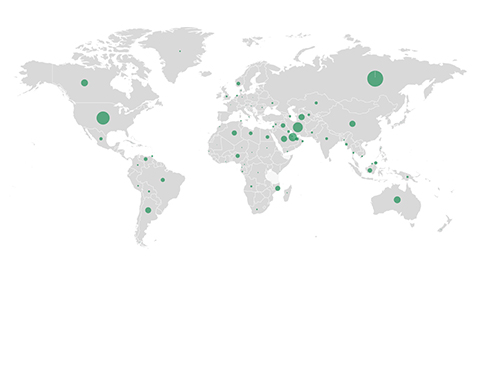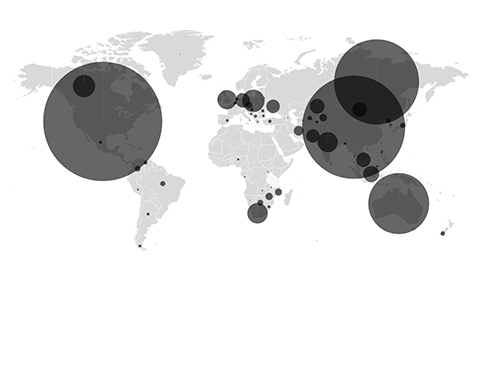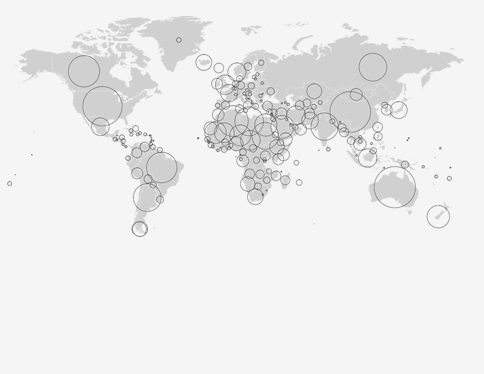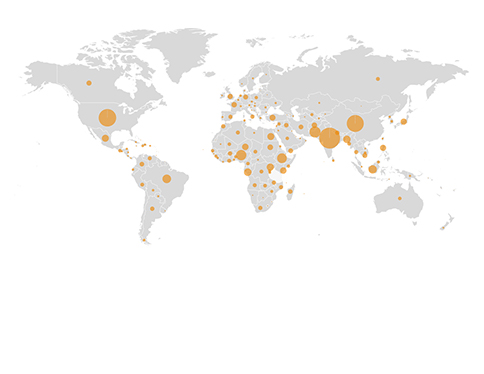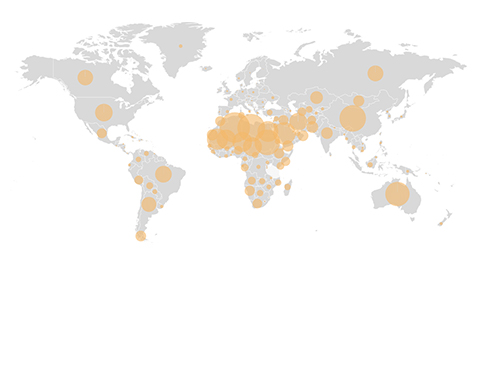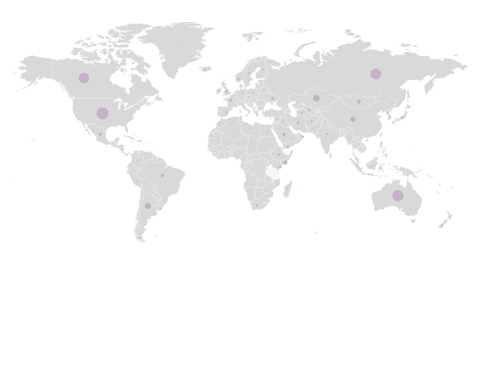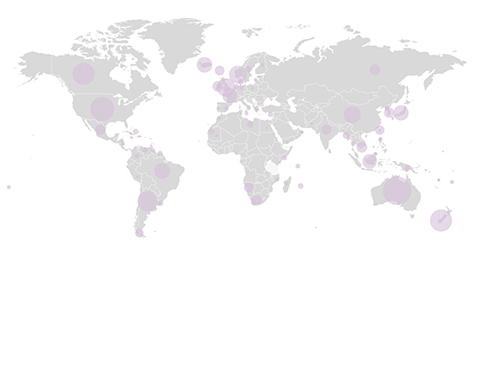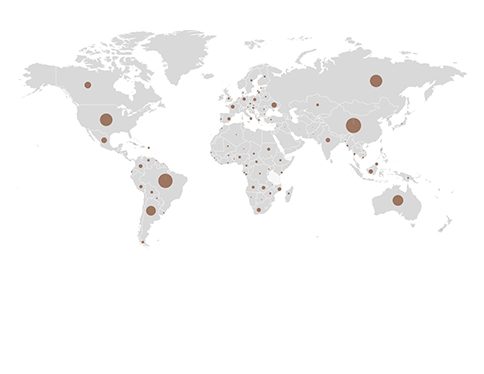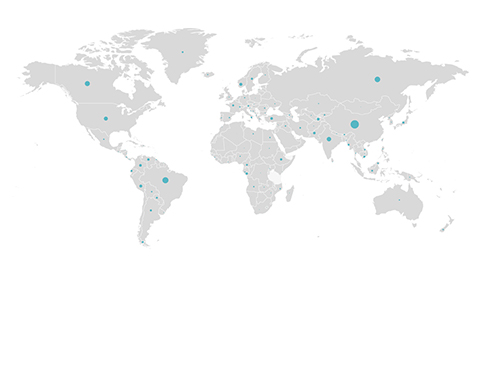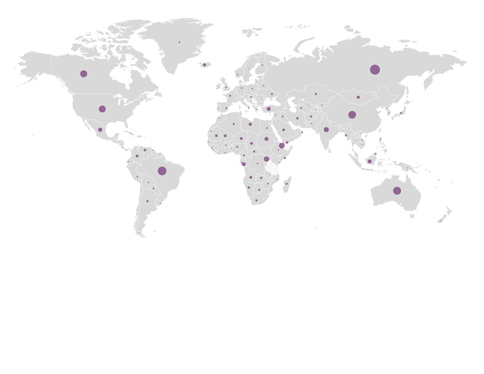Icons
Use these buttons in the top bar and throughout the tool to filter the data and explore the various views.
Share:You can use this button to either share the entire tool, or to share your current view.
Dashboard view:An overview of numbers for all energy sources in a selected country or region.
Download:For a collated version of all data, download the Microsoft Excel file.
Chart view:A representative pie chart for all energy sources in a selected country or region.
Reset:Reset the tool to remove any filtering you may have done.
Add:Compare your initially selected country or region by selecting an additional one.
Map view:This is the load view, however, you can click this to return to the map from the list.
Detail: See a detailed list of all countries included in a selected region.
List view:View a condensed list view of the country information shown on the map.
Remove:Remove a country or region from comparison view in order to select another.

